Under a dark canopy of fir trees lie a blanket of moss and decomposing needles. Scattered across this dark forest floor are hundreds of pocket gopher skulls and bones in a timeless scene only nature can create. Based on the location and detritus, it appears that many generations of owls have flourished in this young stand of trees,
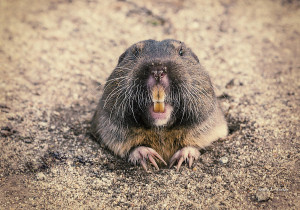
nourished by the large population of nearby pocket gophers and other rodents. Normally, this would just be another example of the natural cycle of life. Perhaps this would be a scene that a biology professor would explore with students. However, in south Thurston County, Washington State, these pocket gopher bones have become a symbol of the harm inflicted by the Endangered Species Act and the detachment from reality of the US Fish and Wildlife Service.
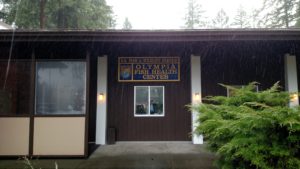
According to the US Fish and Wildlife Service (USFWS) the Mazama Pocket Gopher found in Thurston County is an endangered species, at risk of extinction. Over the last few years, the USFWS has created a matrix of local planning rules (with the enthusiastic support of local bureaucrats and environmental groups) that have prevented people from building homes, school districts from adding classrooms, and local residents accessing their own property. The USFWS claims the presence of humans will harm the pocket gopher and cause this rodent to go extinct. Many regulations have been imposed by local Central Planners – including a $42,000 pocket gopher tax on new homeowners. There has been local resistance to these restrictions, but the USFWS tells locals that resistance is futile.

The regional office for the USFWS is located in Lacey, Washington between the Washington State Department of Ecology and St. Martin’s University. Towering over their locked and secure offices are large Douglas fir trees. The biologists who work at USFWS have reluctantly admitted these endangered pocket gophers also live in the grass and fields next door to their offices. This inconvenient truth is glossed over by those who profit from the endangered gopher narrative.
First, the government tried to exterminate the gopher
 The pocket gopher has a long history of being labelled as a pest by the Federal government for many decades. From the 1940s until the recent 1990s, the US Department of Agriculture had funded bounty programs attempting to exterminate this pocket gopher using poison and traps in Thurston County. After 50 years of studies and government funded extermination efforts, the USDA concluded that the pocket gopher was virtually invincible and impossible to eradicate. Most of their documented efforts around the country and in Thurston County proved that, while these control efforts might have a temporary impact, even small populations of gophers would expand their numbers rapidly. Beyond Thurston County, government funded efforts to exterminate the gopher continue around the country (See USDA source documents linked at the end of this article).
The pocket gopher has a long history of being labelled as a pest by the Federal government for many decades. From the 1940s until the recent 1990s, the US Department of Agriculture had funded bounty programs attempting to exterminate this pocket gopher using poison and traps in Thurston County. After 50 years of studies and government funded extermination efforts, the USDA concluded that the pocket gopher was virtually invincible and impossible to eradicate. Most of their documented efforts around the country and in Thurston County proved that, while these control efforts might have a temporary impact, even small populations of gophers would expand their numbers rapidly. Beyond Thurston County, government funded efforts to exterminate the gopher continue around the country (See USDA source documents linked at the end of this article).
Gophers thrive on artillery ranges, airports, and amidst volcanic eruptions
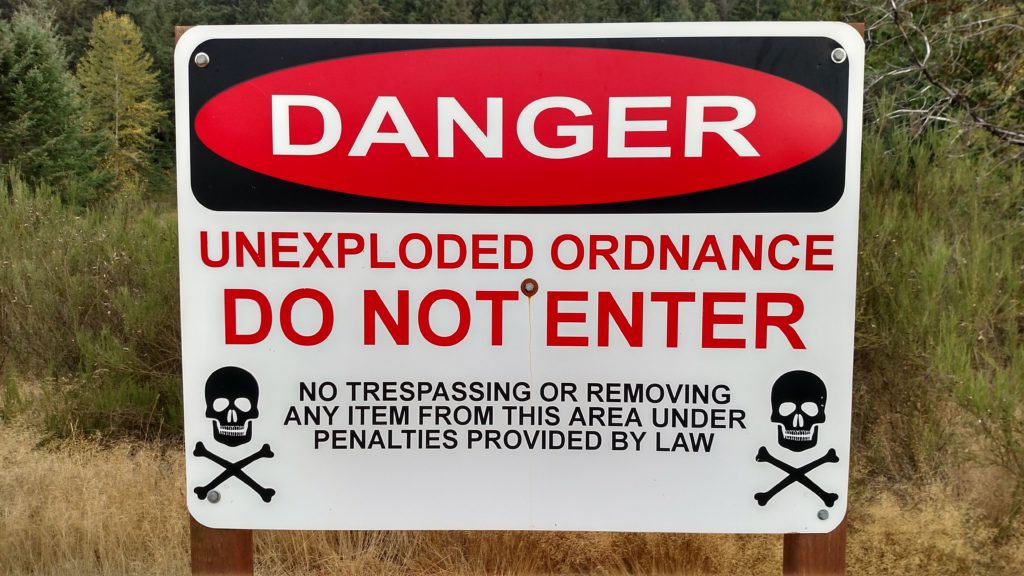
Recent habitat studies support the USDA conclusions. In the nearby Ft. Lewis/McChord army base, the largest documented concentrated population of pocket gophers was found to be thriving in the middle of the artillery impact zone. These thousands of acres have been regularly destroyed, bombed, burned and pulverized for over 100 years since World War I. Despite being the most impacted piece of land in Washington State, the USFWS “scientists” and bureaucrats argue – usually with a straight face- that pocket gophers must be protected from human action like a tractor driving in a field, installing fence posts, irrigation, kids riding their bicycles, family pets, building a big toy in a back yard, and tree planting. At the 2014 “public hearing” in which all the people, including biologists, who spoke against the listing were ignored, the USFWS even claimed that agricultural activities could only be allowed during the months from November – March, under the belief that crops could be grown in the snow and the “agricultural activities” wouldn’t then impact the precious gopher during the summer and fall seasons.

In addition to flourishing amidst the artillery barrages at Ft. Lewis, this endangered gopher also thrives at the Olympia Regional airport, along Highway and Freeway easements, and in many other places where agricultural activities occur. In a famous documentary produced in Washington State after the Mt. St. Helens eruption in 1980, which had the force and impact of a major nuclear bomb destroying all animal and plant life for miles the first animal to appear from underneath the blanket of ash was the pocket gopher.
Local control attacked by USFWS, politicians thrown out, now threats of “sue & settle lawsuits”
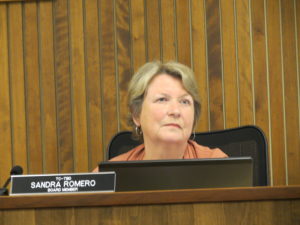
Eventually the gopher was listed as “threatened” by the USFWS. Despite all evidence to the contrary, the USFWS was able to suppress a rebuttal effort by the Washington State Department of Fish and Wildlife (WDFW) which was critical of the USFWS claims, but the listing proceeded just as the USFWS promised it would. However, along the way, the USFWS was able to take advantage of an opportunity to completely take control of all land use policy in Thurston County. This circumstance was enabled by the actions of three exceptionally incompetent county commissioners (Sandra Romero, Kathy Wolfe, and Karen Valenzuela). Additionally, planning staff at Thurston County eagerly sold themselves for Federal grant dollars. With county government support, USFWS was able to implement their plan on Thurston County.
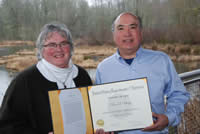
Eventually the patience of the local residents of Thurston County ran out. All three of the commissioners who cheered the USFWS’s schemes were defeated at the ballot box or they quit. Hand-picked successors were also defeated in the recent elections. Many of the senior bureaucrats from the USFWS including former local director Ken Berg abandoned Thurston County so they didn’t have to live under the rules they were imposing on their former neighbors. Similarly, many senior Thurston County central planner bureaucrats instrumental in imposing this destruction on their former communities also left including Don Krupp (currently County Manager in Clackamas County, Oregon), Cliff Moore (now City Manager in Yakima, Washington), and Scott Clark (moved to Arizona), among others.
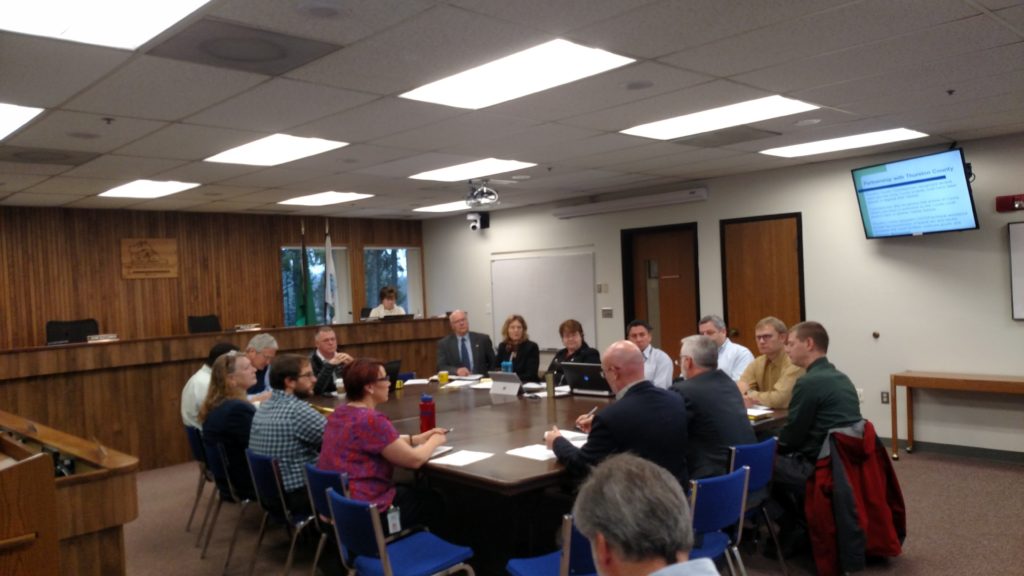
The new Thurston County Commissioners are all on the record strongly opposed to the habitat mitigation gopher tax scheme imposed by USFWS through the Federally funded planning bureaucrats “employed” by Thurston County (but actually paid by Federal grant dollars through USFWS). It was clear that voters of Thurston County are fed up by the gopher mania and ignorance on display by bureaucrats and zealous environmentalists who avoid the consequences of the damage they do to their neighbors. To the bureaucrat, a $42,000 gopher tax bill for every home is perfectly reasonable. Meanwhile hundreds of people in Thurston County can’t build their home, remodel their home, or live on their land. One upset resident has threatened a hunger strike. Most are just disgusted by the bureaucrats that have stalled or destroyed their dreams
USFWS doesn’t care. They never have. When asked how many gophers live in Thurston County, they can’t say. When asked how may gophers in Thurston County would be considered “restored” they can’t say. They won’t say. USFWS bureaucrats refuse to pick a tangible number to which they can be held accountable. If no goal is set, then they don’t have to worry about successfully “restoring” the gopher, and like they admitted, it isn’t about saving the pocket gopher anyway. They do care about their budget and expanding their power. They do care about making sure that they can set up the circumstances for more “sue and settle” lawsuits by environmental groups like Wild Earth Guardians, Center for Biological Diversity, and others to sue the government, thus allowing the government to make a secret cash settlement and “agree” to some new nest of arbitrary rules never approved by any elected official. The USFWS can then hold up their hands and say “not our fault, give them your money.” This is the scam, and Thurston County isn’t the first place this con has been played.
USFWS – A long history of fake science
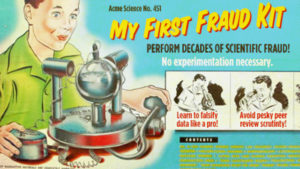
The USFWS now exists primarily to push fake science. Many scandals about “endangered” species abound in the United States. In Eastern Washington, the White Bluffs Bladderpod incident was classic. This was a common plant that the USFWS claimed was endangered. As is their style, the USFWS refused to commit an act of science to justify their claims. Instead, an agricultural group took plant samples and hired independant 3rd party scientists to evaluate the DNA of the “White Bluffs Bladderpod” only to find it is a common weed found in 7 western states. The truth doesn’t matter to the USFWS, they are listing the plant anyway and the local property owners will be denied access to or use of their lands. This is how USFWS operates.
The hapless Thurston County pocket gopher is a similar story. A series of well-researched articles was written a few years ago by a local researcher named Melissa Genson exposing much of the fraud and incompetence behind the gopher madness. It is hard to dispute the
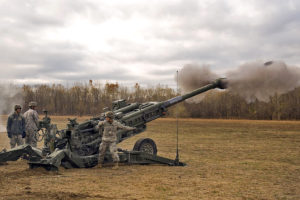
facts and the silliness of the current state of the pocket gopher scam in this community. To many local residents, the term “pocket gopher” has begun to symbolize the incompetence and dishonesty of government, and this is why new county commissioners have been elected. While the USFWS arrests local residents who trap a gopher and charge them with felonies – a few miles away, the owls are creating a veritable gopher holocaust. Yet, somehow this gopher thrives in nearby yards, fields, and on the artillery impact range at Ft. Lewis.
A strong case for eliminating the USFWS, restore local control
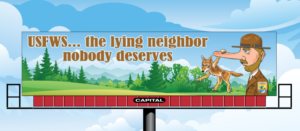
An effort to reorganize the Federal bureaucracy is beginning in Washington DC. There is understandable skepticism that this process can be successful. However, opportunities are created by the incompetence and corruption of government agencies and departments like the USFWS. The USFWS exists under the department of the Interior. However, this agency is almost entirely redundant. Every state has an equivalent state agency that does basically the same function – manage wildlife, and they are far more effective and more likely to be aware of local problems and needs. Secondly, the USFWS manages and supervises a variety of wildlife refuges around the nation. These could easily be transferred to the states and managed more cost effectively and responsibly by the local agencies. Finally, the USFWS has a group of specialists who focus on the inspecting and managing the importation of specialized items involving endangered species and related products. This department’s employees and skills could be transferred to the Customs Department.
focus on the inspecting and managing the importation of specialized items involving endangered species and related products. This department’s employees and skills could be transferred to the Customs Department.
This change could also begin the process to clean up the corrupt sue and settle schemes that are widely directed by the USFWS today and operate as legal kickback schemes to their accomplices in the environmentalist scene. Restoring local control over the natural resources will ensure a more rational approach to both protecting species and supporting local communities. State agencies and local government will be less likely to apply a one size fits all top-down approach to solving local challenges. Property owners could be rewarded for creating the natural habitat where endangered species can survive rather than be punished for being good stewards of their land. Perhaps, without the USFWS pushing politicized fake science, real science could once again be used to study and understand unique and rare animals. Perhaps this energy and these resources could be directed at animals that don’t thrive in artillery impact zones.

Although it may cost the jobs of some Federal bureaucrats, strengthened state wildlife services would ensure a more rational and local approach to protecting wildlife. Until that time, Thurston County Commissioners fight back against the dream-devouring Leviathan of the USFWS. Until that time, local residents watch their dreams of homeownership die, schools remain crowded, trees go unplanted, and the frustration with the incompetence of government grows. Environmentalist cheer the harm they inflict on their fellow man while hoping for a cash payout in their future lawsuit. A hunger strike begins. The gophers continue to thrive and die by the thousands in the talons of the owls, in the dark quiet of the woods, the silence of the gophers…
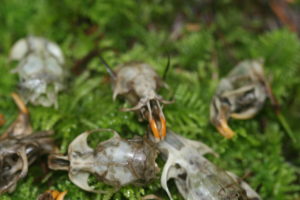
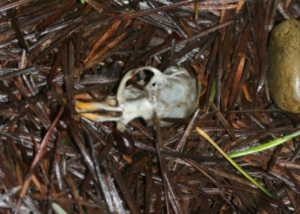
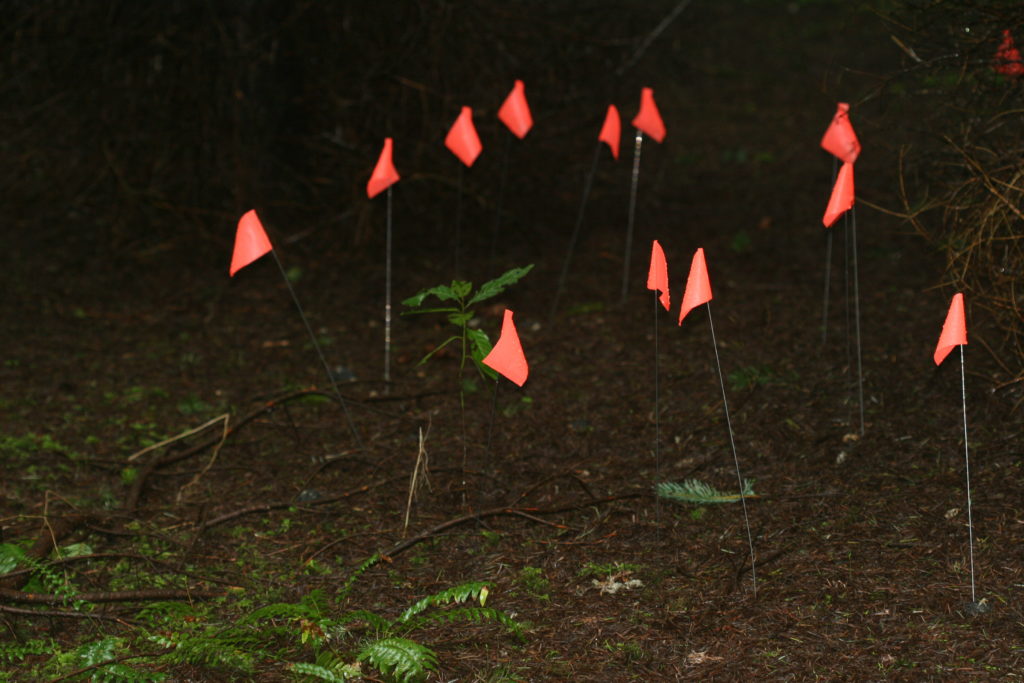
_____________________________________________________________________
OUR CONSTITUTION BEGINS WITH THE PHRASE “WE THE PEOPLE.” IT WAS THE FOUNDER’S INTENT THAT GOVERNMENT BE CREATED BY THE PEOPLE, TO SERVE THE PEOPLE. IT WASN’T THEIR INTENTION FOR THE PEOPLE TO SERVE THE GOVERNMENT. IT WAS ALWAYS INTENDED THAT GOVERNMENT WHICH FAILED TO SERVE THE PEOPLE SHOULD BE “ALTERED OR ABOLISHED.” UNTIL WE RETURN TO THE FOUNDER’S INTENT, WE REMAIN WE THE GOVERNED…
Related Background Articles about Pocket Gophers in Thurston County:
Thurston County invents a new $42,000 pocket gopher tax for new homeowners
Gophers, Artillery, and US Fish and Wildlife
Gopher wins ESA Listing Based on Genitalia Size
Can a Well-Endowed “Endangered” Gopher Really Drive a Tractor?
Shooting Owls, Counting Slugs, and Fighting Evolution, USFWS hard at work.
Washington State Protects Gophers Better than Cops, Citizens
International Commission on Zoological Nomenclature Behind Pocket Gopher Hoax
Secret Gopher Map Reveals Washington Agency’s Power
Government Claims About Pocket Gopher Protection Remain Flawed
Outdated Essays on Pocket Gophers Reveal Lack of Evidence for ESA Listing
Washington State Fish and Wildlife “FAQ” sheet about pocket gophers
The Olympian – Thurston County Couple at wit’s end over county delaying new home
Tri-City Herald – Endangered claim for White Bluffs Bladderpod questioned
South Thurston Journal – The Great Gopher Hoax – How I Uncovered the ESA fraud
Sue and Settle – Regulating Behind Closed Doors
Environmental Groups keep suing – despite vast ESA settlement agreements
USDA and other Federal Govt Source Documents about efforts to eradicate pocket gophers
1999- USDA’ -“Trapping Considerations for the Fossorial Pocket Gopher”
1992- USDA – “SUMMARY OF A USDA FOREST SERVICE POCKET GOPHER TRAPPING CONTRACT”
1976 – US Forest Service presentation – “INCREASING POCKET GOPHER PROBLEMS IN REFORESTATION”
1962 – Proceedings of the 1st Vertebrate Pest Conference- “CONTROL OF POCKET GOPHERS”

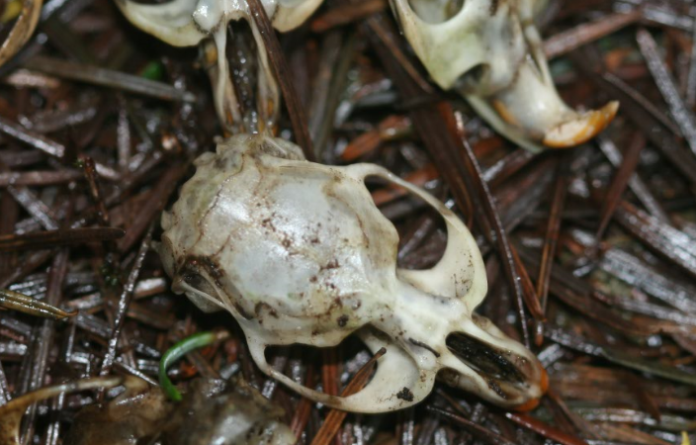







The local Sheriff should and could arrest these jack booted thugs and escort them out of his county.
Perhaps he should, but I would also just like to dissolve the agency so that nobody else ever has to experience this insanity…
Comments are closed.